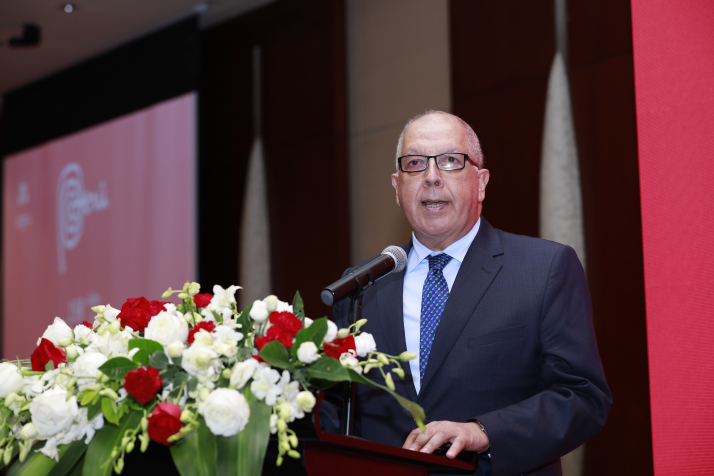| Voice |
| Going the distance | |
|
|
 Luis Quesada, Peruvian Ambassador to China
China and Peru have developed close trade ties since their establishment of diplomatic relations in 1971. At the 2022 China International Fair for Trade in Services, held in Beijing from August 31 to September 5, Peru displayed its distinctive alpaca wool products among others such as coffee and quinoa. In an interview with Beijing Review reporter Li Xiaoyang, Luis Quesada, Peruvian Ambassador to China, commented on the trade ties between the two countries. Edited excerpts of their conversation follow: Beijing Review: How have China and Peru fostered their relationship? Luis Quesada: On November 2 last year, Peru and China commemorated the 50th anniversary of their diplomatic relations. We have a diversity of bilateral mechanisms that reflect the excellent state of our comprehensive strategic partnership, and the free trade agreement (FTA), still in optimization, is one of them. China is currently Peru's main trading partner, its first market for exports and its primary market of origin for imports. It represents around 31.6 percent of total goods traded between Peru and the rest of the world. We reached a historic $37 billion in trade exchange in 2021, which represented an increase of 60 percent year on year. Additionally, Peru is the second main investment destination for China in the [Latin American and Caribbean] region. There are more than 200 Chinese corporations working in different sectors of our economy, such as infrastructure, mining, energy, technology or finance. Today, Chinese investment in Peru exceeds $30 billion. What kind of opportunities does the Chinese market offer Peruvian enterprises? Looking back, the bilateral economic cooperation could be summed up as one of fruitful development. Peru exports mainly minerals to China, which account for around 80 percent of our trade surplus with your country. The main mining product of Peru is copper. Sales of Peruvian marine and agricultural products to China are also growing fast. The FTA, which generated more business opportunities for the private sectors of both our countries, is the key asset in our trade relationship. It is important to conclude the optimization process as soon as possible to unleash new potential. Peru has a comparative advantage in agricultural products, such as fruits and coffee, and amazing quality textile products, alpaca fur being a prime example. The relevant agencies could exchange views about more products from Peru gaining market access to China. Our private sector is committed to enhancing its competitiveness in the Chinese market. How can China and Peru expand the number of fields in which they cooperate? China is one of the global leaders in digitalization. Peru is highly interested in fostering its digitalization process via Chinese cooperation. Our priorities are the digital transformation of our industrial sector; the development and expansion of e-commerce; the education and training in digitalization; and the digitalization of our public governance. Peru is also attractive for investors in renewable energy. It has different resources and big potential. Hydroelectric plants can be established in the Amazon River, the Pacific Ocean and the Lake Titicaca basins. Peru also features important potential in solar, wind and geothermal energies. A large part of our future agenda will focus on the further promotion of scientific and technical collaboration and continue to deepen our mutual knowledge through academic, technological and people-to-people exchanges. These are areas with great opportunities that will surely shape our relationship for decades to come. Peru is eager to continue its efforts to attract more capital and businesses from China in new fields. This is crucial in order to strengthen our economy, better connect it with global markets and more swiftly achieve our goals of social inclusion, poverty alleviation and a general rise in the wellbeing of all Peruvians. Amid the COVID-19 pandemic and current geopolitical changes, how can China and Peru manage the challenges together and improve free trade? Without any doubt, the following years will be quite challenging in terms of the inventiveness and dynamism in the private sector, the creation of employment and the reduction of poverty. The disruption of international trade in general, the disarray of supply chains, travel restrictions within and from other countries, surging inflation and a looming economic recession, and the effects of worldwide food scarcity and climate change are the most important setbacks for global economic growth. With this gloomy and uncertain economic outlook, an unwavering commitment to open markets and cooperation should be our principal approach. The conclusion of our FTA's optimization process is of the utmost importance to attain new levels of trade integration between both countries. Copyedited by Elsbeth van Paridon Comments to lixiaoyang@cicgamericas.com |
|
||||||||||||||||||||||||||||
|
